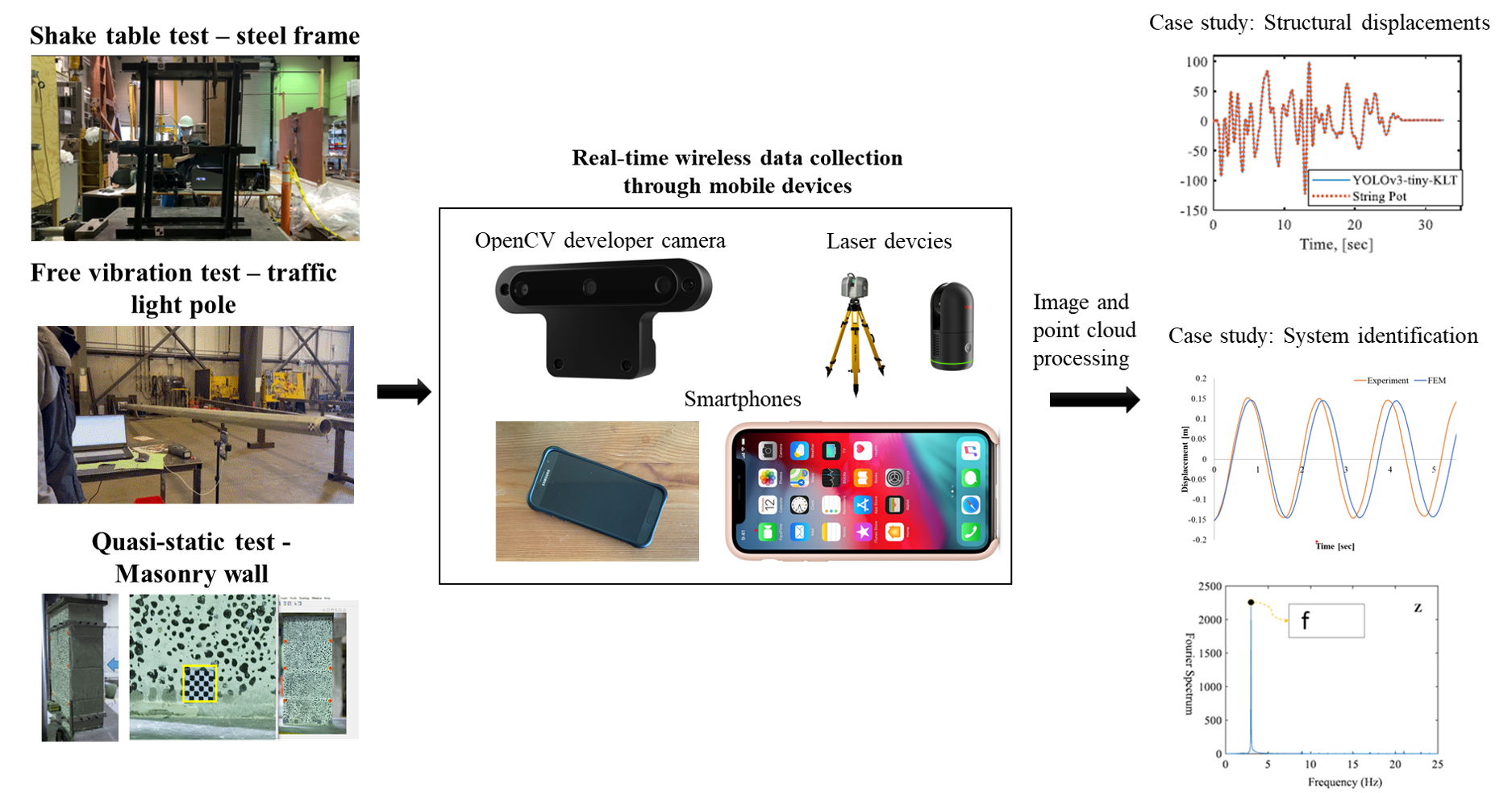
Methodology
Structural experimental testing is the critical method to evaluate new design concepts. Measuring structural response quantities such as displacements, velocities, accelerations, strain, etc., is crucial to understanding the structural behavior. Traditional contact-type sensors such as string pots and LVDT require a relatively complex instrumentation process and can be inconvenient to use in inaccessible and hard-to-reach areas. This research intends to develop and apply a digital twin approach to measure the structural response quantities in a non-contact and wireless manner. The proposed methodology integrates advanced deep learning, computer vision, point clouds, and smart mobile devices to provide an effective and convenient sensing solution for structural testing.

Methodology
[1] Pan, X., Xiao, Y., Yao, H., Yang, T. Y. (2023). Vision-based real-time structural vibration measurement through interactive deep-learning-based detection and tracking methods. Engineering Structures, 281, 115676.
[2] Chen Z., Xiao Y., Pan, X., Yang T. Y., Yang W. (2023). Vision-aided nonlinear control framework for shake table tests. Canadian Conference - Pacific Conference on Earthquake Engineering (CCEE-PCEE) 2023, Vancouver, British Columbia, Canada.